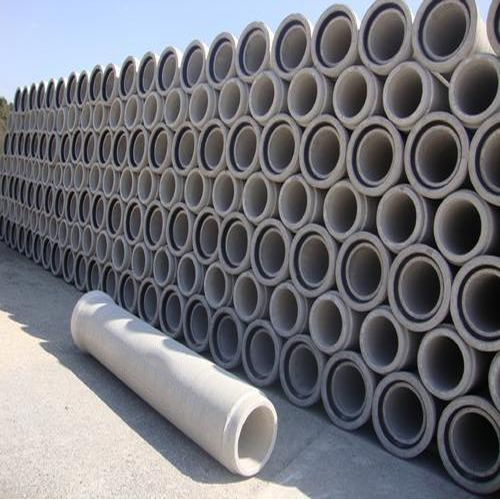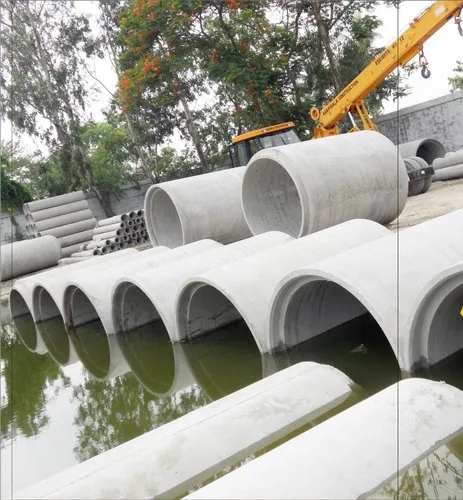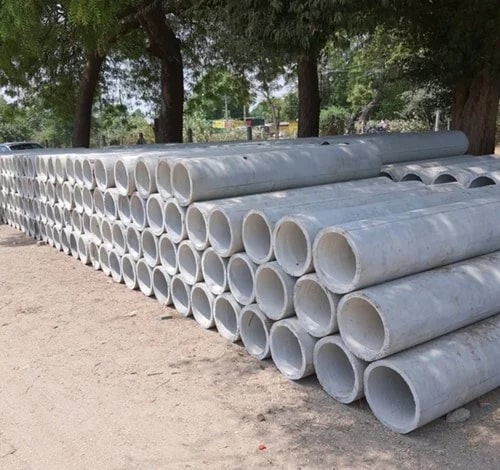Hume Pipe
A Hume pipe, also known as a reinforced concrete cement (RCC) pipe, is a durable, high-strength pipe commonly used in infrastructure projects for water drainage, irrigation, sewage systems, and culverts. Made from a mixture of cement, sand, aggregate, and steel reinforcement, these pipes are cast in a cylindrical shape and are designed to withstand high pressure and heavy loads. Hume pipes come in various sizes and lengths, providing versatility for different construction and engineering applications. Their durability and resistance to corrosion make them a popular choice for underground installations.



RCC Hume Pipe
Price: 2500 INR/Piece
- Material:Cement
- Usage: Water Drainage, Sewerage and Irrigation
- Color: White
- Length: 2.5 m
- Size: 300, 350, 450, 600, 800, 1000, 1200, 1400,1600 mm
Importance of Hume Pipe :
Drainage and Sewage Systems: Hume pipes are widely used in underground drainage systems for efficient water and sewage management.
Durability: Made from reinforced concrete, they are highly durable and can withstand heavy loads, making them ideal for long-term usage.
Cost-Effective: Compared to other piping materials, Hume pipes are economical, especially for large-scale projects.
Environmental Sustainability: Being made from natural materials like cement, sand, and stone, they are eco-friendly and recyclable.
High Load Bearing Capacity: Hume pipes are strong enough to support road and railway embankments, making them essential for infrastructure projects.
Versatility: They are used in culverts, irrigation systems, stormwater drainage, and even water supply pipelines.
Features of Hume Pipe :
Reinforced Concrete: Hume pipes are made from a mixture of cement, sand, and aggregates, reinforced with steel bars or mesh, which gives them high strength and load-bearing capacity.
Variety of Sizes: They are available in a range of diameters and lengths, allowing them to be used in different types of construction projects.
Durability: The materials used in Hume pipes make them resistant to corrosion, weathering, and other environmental factors, ensuring a long service life.
High Load Capacity: These pipes are designed to withstand heavy loads, making them ideal for applications where they will be buried under roads, railways, or other heavy structures.
Jointing System: Hume pipes typically have spigot and socket joints or collar joints that allow for easy and secure connection between pipes, ensuring a leak-proof system.
Smooth Internal Surface: The smooth inner surface of Hume pipes reduces friction, which allows for efficient fluid flow and minimizes blockages.
Benefits of Hume Pipe :
Long Service Life: Due to their robust construction and resistance to environmental factors, Hume pipes have a long lifespan, reducing the need for frequent replacements and maintenance.
Cost-Effective: Although the initial cost might be higher than some alternatives, the long lifespan and low maintenance requirements make Hume pipes a cost-effective solution in the long run.
Versatility: Hume pipes are used in a wide range of applications, including drainage systems, sewage systems, culverts, irrigation systems, and as stormwater drains.
Environmental Resistance: Their resistance to corrosion and chemicals makes them suitable for use in harsh environments, such as industrial areas or regions with acidic soil.
Load-Bearing Capacity: The high load-bearing capacity of Hume pipes makes them suitable for use in projects where they need to support heavy loads, such as under highways, railways, or in industrial settings.
Ease of Installation: The availability of various jointing methods and the standardized dimensions of Hume pipes facilitate quick and easy installation, saving time and labor costs on site.
Reduced Leakage: The secure joints used in Hume pipes minimize the risk of leakage, which is particularly important in sewage and drainage applications.
Sustainability: Hume pipes are made from natural materials (cement, sand, aggregates) and have a low environmental impact during their production and disposal.
Applications:
Underpasses: They are also used in the construction of small underpasses or pedestrian walkways beneath roads.
Utility Tunnels: They can also be used to create tunnels for carrying utilities such as power cables, gas lines, and communication cables.
Cooling Water Systems: In industrial settings, Hume pipes are used to transport cooling water to and from machinery and other equipment.
Road and Railway Culverts: Hume pipes are used to construct culverts under roads and railways to allow water to pass beneath without damaging the infrastructure.
Sewer Lines: Hume pipes are commonly used in underground sewerage systems for transporting sewage from residential, commercial, and industrial areas to treatment plants.
